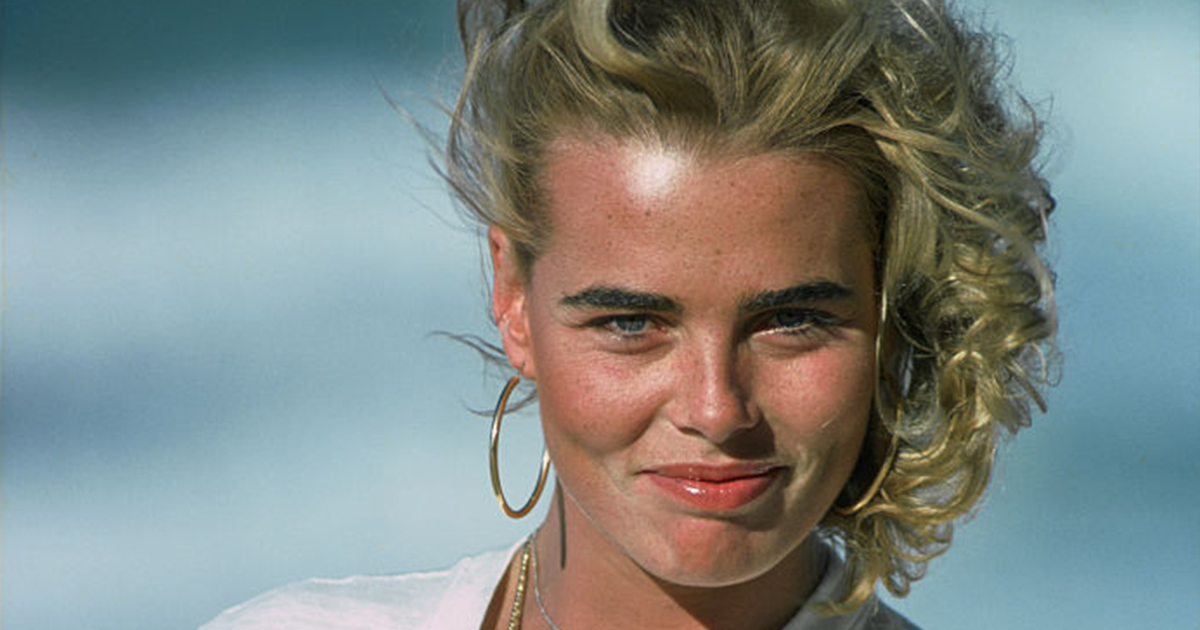At one point, Margaux Hemingway appeared to have it all: celebrity, beauty, and a last name that attracted attention from people all over the world.
The supermodel became one of the most identifiable faces of the 1970s and appeared on almost every major magazine cover for a while.
However, behind the glitzy exterior was a painful life, and her severely decomposed body was discovered by authorities in 1996. Even those who believed they knew her best were shocked by what they would discover next.
A generation was distinguished by her appearance.
Despite having the name, the face, and the notoriety, Margaux Hemingway was not saved.
A six-foot-tall blond beauty, the first model to sign a million-dollar contract, and a lady who seemed destined for the limelight, she was everything to the world.
She possessed the name, the contacts, and the appearance that characterised a generation in the 1970s. However, beneath the glossy magazine covers, red carpets, and camera flashes, Margaux’s life was a tale of suffering, addiction, and the eerie legacy of the Hemingway name.
And that story concluded in 1996 in a way that still makes many sad.
The significance of her name
The granddaughter of renowned author Ernest Hemingway, Margaux Louise Hemingway was born on February 16, 1954, and was considered literary royalty. Byra Louise (née Whittlesey) and Jack Hemingway, the author Ernest Hemingway’s eldest son, had three daughters, of whom she was the middle daughter.
Originally called Margot, Margaux changed her name to “Margaux” after learning that she was named after the upscale French wine Château Margaux, which her parents were drinking the night she was conceived.
Before moving to San Francisco, where her father was a stockbroker, the family spent a number of years on Ernest Hemingway’s farm in Cuba. They relocated once more in 1967, this time to Ketchum, Idaho, a mountain town where Ernest Hemingway had committed suicide six years earlier.
Margaux burst onto the modelling world at the age of 21. She made history in 1975 when she signed the first-ever million-dollar deal in history with Fabergé for their Babe perfume, showcasing her towering figure and iconic visage. She was named “The New Beauty” by Time magazine. Cosmopolitan, Elle, and Vogue were all smitten with her.
“The face of a generation, as recognisable and memorable as Lisa Fonssagrives and Jean Shrimpton,” as New York fashion artist Joe Eula put it in 1975, was Ms. Hemingway’s accolade.
All of a sudden, I was a global cover girl. Margaux said, “Everyone was soaking up my Hemingwayness.” It was as glamorous as it sounds. I was enjoying myself immensely. However, when I first entered the industry, I was also really naive. I honestly believed that my humour and positive traits were the reasons why people liked me. Meeting so many professional leeches was not something I had anticipated.
How Ernest’s spirit was passed down to Margaux
However, Margaux was a cultural influence in addition to being a model. She also knew quite well that people were interested in her last name.
Naturally, I capitalise my name. In 1979, she said to a magazine, “But, gee, I do it in style.”
She frequently claimed that her “grandpa” taught her how to generate headlines at a young age and that this contributed to her free spirit.
Furthermore, Margaux and her grandfather did share certain characteristics. One of her earliest modelling assignments was a Key West photo shoot for Town & Country magazine. Margaux was the only grandchild of Ernest Hemingway to inherit his bulk and broad, attractive features. She adopted an attitude of living large and pursuing adventure, and she walked with a rolling, athletic pace. She claimed to have “Hemingway’s spirit in her marrow” at one point.

In 1984, Margaux said, “I used to say that.” But I’m more modest today. That is a matter for others to discuss. I suppose I am a bit of a daredevil.
1984 skiing mishap
Margaux partied at Studio 54 with disco legends Andy Warhol and Bianca Jagger during the height of the movement. Alongside her sister Mariel Hemingway, she acted in her first film, Lipstick, which was criticised by critics. She went on to star in Killer Fish and Over the Brooklyn Bridge.
Behind the flashbulbs, however, Margaux was having trouble. She became a regular at Studio 54 and began to experiment with drugs and alcohol.
Margaux Hemingway and Cary Grant, an English American actor and Faberge director, / Getty Images
She has struggled with epilepsy, bulimia, and depression since she was a teenager. She started using alcohol as a form of self-medication. She was hurt and left vulnerable after a skiing accident in 1984. She spiralled due to the weight gain that followed and disappointments in her career. She went to rehab. In an attempt to change who she was, she posed for Playboy in 1990.
“I identify with Hemingway. I am well-versed in addiction. She once acknowledged that drinking is a curse that affects everyone.
“Drugs only make you worse off.” “It’s junk,” she added.
Reason for death
A lifetime of personal suffering, the demands of celebrity, and the shadow of her well-known grandfather combined to produce a poisonous storm. Her marriages ended in divorce, and her relationships with her family, particularly her father, deteriorated.
Margaux claimed in the early 1990s that she had been sexually molested as a kid by her father. He denied it and severed communication with her mother. Mariel, her sister, verified the allegations years later.
Margaux Hemingway was discovered dead in her tiny Santa Monica flat on July 1, 1996. She had just moved into a beachfront studio apartment.
It all began when Margaux failed to answer her phone or answer door knocks. After that, friends got a nearby employee to grab a ladder so they could use the balcony to enter her house.
The former supermodel had taken a fatal quantity of phenobarbital when she was discovered by cops. According to the toxicology report, she took so many drugs that her body was unable to process them all before she died.

She was only forty-two.
“The curse of Hemingway cannot be broken.”
Unfortunately, the body was so decayed that it was hard to identify it immediately, according to officials from the Los Angeles coroner’s office. The remains’ identity as belonging to a woman was initially the only thing the police could corroborate.
It was determined to be suicide. Tragically, she also became the fifth Hemingway family member to commit suicide.
She had once remarked, “You can’t escape the Hemingway curse.”
She passed away precisely 35 years before to the date of her grandfather Ernest Hemingway’s tragic suicide.
Beyond her hardships,
Margaux’s narrative still has a profound impact on people today: a lady who appeared to have it all while secretly facing invisible demons.

According to her sister Mariel, who is currently 63 years old, “Margaux was a beautiful, generous, and kind soul.” Her hardships were numerous and genuine. However, she was more than her difficulties. She was a very loving person who desired love in return.
Mariel has devoted her life to raising awareness of mental health issues. Her family’s battles with mental illness are examined in the critically acclaimed documentary Running from Crazy, to which she contributed.
The legacy of Margaux
Margaux Hemingway continues to be a hauntingly beautiful representation of brilliance, tragedy, and the price of a spotlight too brilliant to bear as people find her photographs, see her films again, and study her life.

At its best, the tale of Margaux Hemingway exposes us to the harsh realities of growing up under a famous name. Her narrative challenges us to see past appearances and show empathy for people who appear to have it all yet are engaged in silent conflicts. It teaches us that a legacy is about the person who created it, with all of their bravery and frailty, and not just about a name or level of renown.
Above all, Margaux’s existence encourages us to have candid discussions about addiction, mental health, and the demands of celebrity, which can benefit others who feel ensnared in their own shadows. Because often the most tragic tales teach the most valuable lessons.


